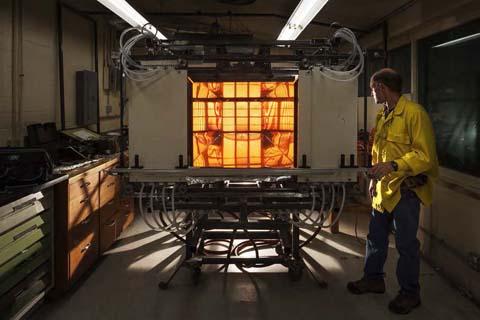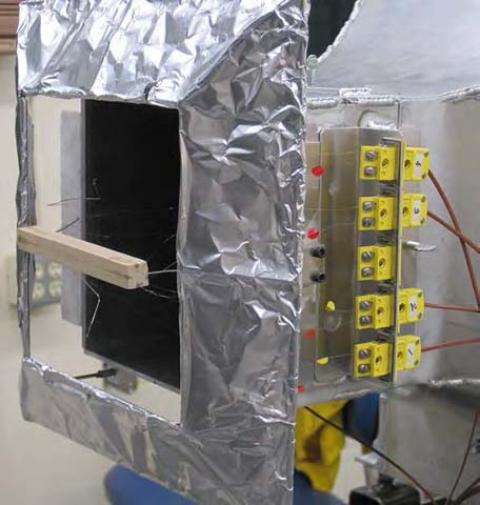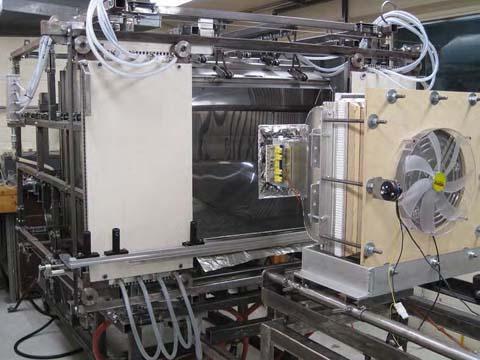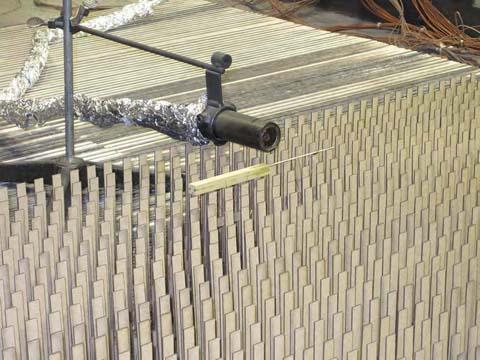Examining fuel particle heat exchange experimentally and through the use of numerical modeling.
Modelers of wildland fire spread have assumed how fuel particle heat exchange occurs during fire spread without the benefit of experimental evidence. Modelers have largely assumed that radiation is the primary mechanism governing wildland fire spread. However, our observations and preliminary experiments indicate that radiation may not be sufficient to ignite fine fuels, which are primarily responsible for fire spread. The heating of fuel particles before ignition and the heat exchange at the fuel surface during fire spread have not been experimentally described. It is not exactly known how fuel particles heat to ignition during fire spread.
FFS Research Physical Scientist Jack Cohen examined fuel particle heat exchange experimentally and through the use of numerical modeling. Instrumented wood fuel particles were exposed to both radiant heating from a heat source and convective cooling from ambient air.
A specially built apparatus allowed them to control and measure this radiation and convection. Fuel particles of various sizes were instrumented with thermocouples to measure temperature at the fuel surface, a result of the net heat exchange. The thermal boundary layer of the heated fuel particle was imaged using Schlieren and shadowgraph techniques. In addition, instrumented fuel particles were attached to laser-cut cardboard fuel beds along with measurements of the particles’ radiation and convective conditions during experimental fires in the Missoula Fire Sciences Laboratory’s wind tunnel.
Data from these experiments were analyzed using a two-dimensional numerical heat transfer model.
Experiments indicated that fuel particle size significantly affected the net heat exchange of fuel particles and thus the amount of time required for ignition. When only radiative heating on a particle’s facing side was considered, coarse particles experienced a higher net rate of heating than fine particles. For example, a 12 mm (0.47 in) particle positioned horizontally and perpendicular to incoming radiation heated to ignition while a 1 mm (0.04 in) particle with the same orientation did not. This occurred because convection heat transfer was greater for the smaller 1 mm particle; the 1 mm particle sufficiently cooled from convection to prevent ignition while the 12 mm particle did not.
Fuel particles attached to the laser-cut cardboard fuel beds during experimental wind tunnel fires indicated that the primary mode of heating is convection during flame contact because there is not enough radiation for ignition. In this case, fine fuel particles ignited before coarse fuel particles. Model analysis also showed increasing convective heat transfer with decreasing fuel particle size. Thus, with radiation heating only, fine fuels convectively cool more than coarse particles and, therefore, do not ignite. These results indicate convection heating through flame contact is a primary mode of heat transfer for fire spread in fine fuels both in the laboratory and in actual fire conditions. This, in turn, indicates that wildland fire models need to describe non-steady flame characteristics that produce flame contact with adjacent fuels.



